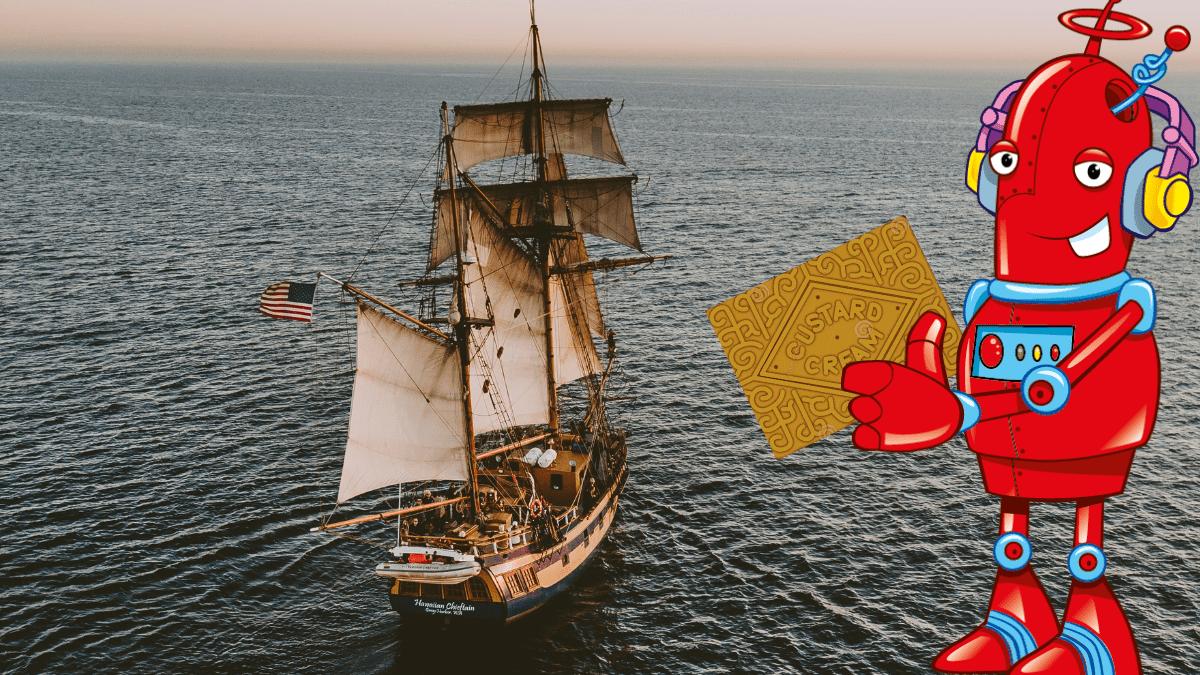In Sean’s Ships: Bringing the World Together, Sean and Robot are on a mission to sell custard creams across the world and with the help of the Captain, have been learning all about ships and world trade.
In this series of Sean’s Ships we’ve been learning all about international trade – that’s the way different countries exchange stuff. A bit like the way you might trade things with friends in Minecraft.
To understand how and why something happens today, it’s sometimes good to see how it developed over time. So let’s take a look at how important trade was in the past and how it developed.
Trade in Ancient Egypt
Around the year 2,000 BC, people first settled along the River Nile where the soil was nice and healthy. They could grow grain and crops to survive, and make their own clothes. However, soon they wanted more than they could make locally.
Ancient Egyptians built wooden boats and sailed along the Nile into the Mediterranean to sell spices, gold and other goods, and buy goods that they needed, like wood from Lebanon to heat their kilns so they could create beautiful pottery.

Trade in Ancient Greece and Rome
The Greeks and Romans were big traders, taking goods from place to place across their Empires. By the 1400s, most European countries were exploring the world by sea to find new trade routes to Asia for tea and spices, and Africa for gold, ivory and beads. Soon they were crossing the Atlantic Ocean to North and South America, although that did lead to the development of the slave trade. By the 1700s, many European nations, particularly Britain, Portugal, Spain and Holland, had set up colonies around the world.
Trade during the Industrial Revolution

The industrial revolution did a lot to grow commerce and international trade in the 1800s.
Factories in Manchester and across Lancashire made cloth to be put on ships and sent around the world.
What is Laissez Faire?
During the Industrial Revolution an idea called Laissez Faire Capitalism became popular. Laissez-faire is a French phrase that means ‘to let do’. The idea was that governments should not interfere with trade and factory owners could do whatever they wanted – which meant workers worked long hours and in dangerous conditions. Then came the Great War and Depression, and governments began to support workers and control trade.
How did the World War impact Trade?
Wars disrupt the ability of countries to grow surplus food or make goods to export. Even if they did, enemies would target ships carrying goods by sinking them. Even if not fighting, countries might put sanctions on others to try and make them behave. That could be restrictions on imports and exports, and when you rely on goods from other countries, that can lead to shortages and rationing. When conflicts break out, a lot of countries are affected.
Sean’s Ships – Bringing the World Together. With support from Lloyd’s Register Foundation.
Add a commentSean’s Ships
How do ships work and why are there so many routes? Sean's exploring the history and science behind ships and international trade!
More From Sean’s Ships






